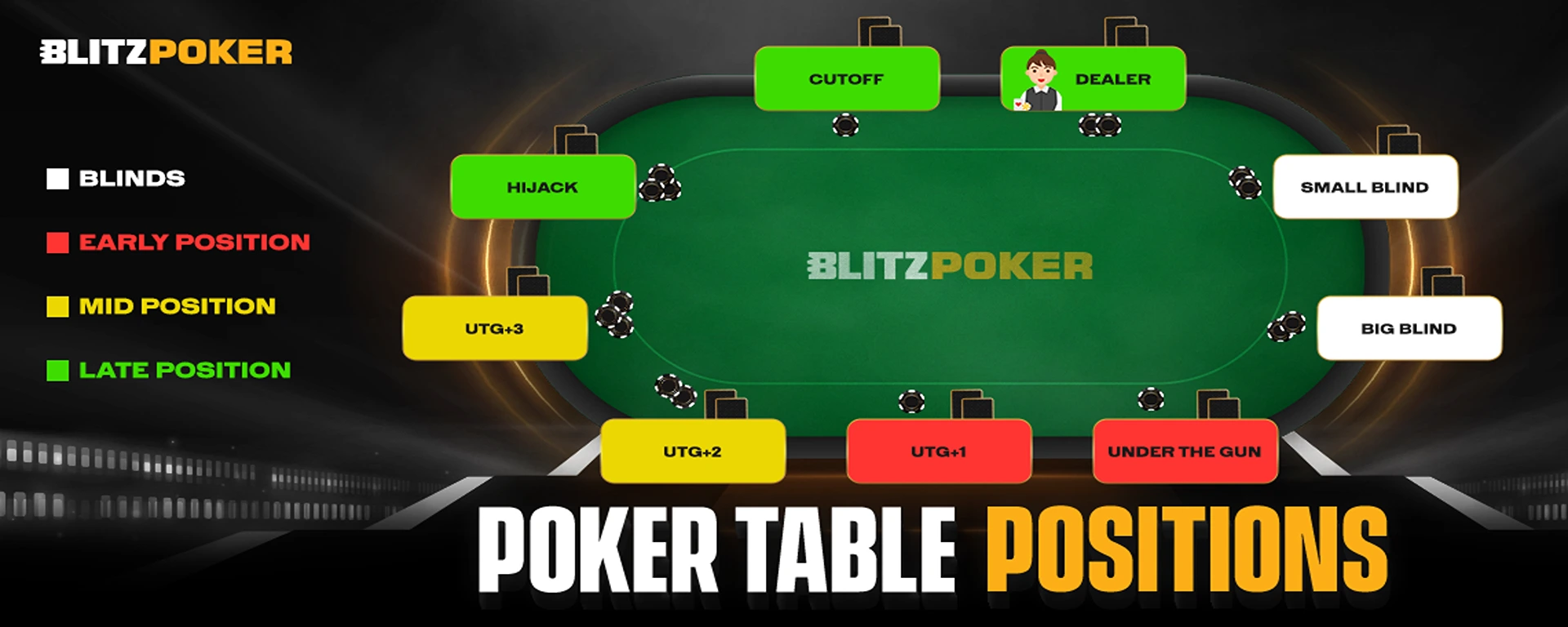When it comes to Texas Hold’em poker, especially in full-ring games, understanding the poker 9 table positions is critical for making the right decisions. These positions influence everything—from your starting hand selection to your betting strategy. In this guide, we’ll break down each of the nine positions at a standard poker table and explain how you should approach them for optimal play.

What Are the 9 Positions at a Poker Table?
In a full-ring Texas Hold’em game with nine players, the table is typically divided into three main segments:
-
Early Position (EP)
-
Middle Position (MP)
-
Late Position (LP)
Each of these segments contains specific seats that dictate your strategic approach. Let’s dive into each of the poker 9 table positions in order of play.
1. Under the Gun (UTG) – Early Position
The first to act preflop, UTG is arguably the toughest position. You have eight players left to act after you, so your range should be tight and strong. Stick to premium hands like AA–JJ, AK, and AQ suited.
2. UTG+1 – Early Position
This is the seat directly after UTG. You still face heavy action behind you, so while you can slightly widen your range, caution is still key. Think of adding hands like TT, AJ suited, or KQ suited.
3. UTG+2 (or MP1) – Middle Position
Now you’re in Middle Position, and the pressure lessens slightly. You can afford to open up your range a bit more. Add suited connectors like 89s or speculative hands like small pocket pairs.
4. MP2 – Middle Position
From here, your position is improving. You’re seeing how early players act before you commit. Expand your range further with hands like AT suited or QJ offsuit, depending on the table dynamics.
5. Hijack – Late Middle Position
The Hijack is a powerful seat. You’re close to the Button and can begin to play more aggressively, particularly if the players after you are tight. Start stealing blinds and attacking limpers with a wider range.
6. Cutoff – Late Position
The Cutoff is one of the most profitable positions at the poker table. You can play a broad range of hands here, especially if the Button is tight. Stealing blinds and controlling the pot becomes easier.
7. Button (BTN) – Late Position
The Button is the best seat at the table. You act last post-flop, giving you maximum control. You can play a wide variety of hands—suited connectors, weak aces, and even some marginal holdings if the situation allows.
8. Small Blind (SB) – Blind Position
While you’re putting in half a blind preflop, the Small Blind is a tricky spot post-flop. You’re first to act in all rounds, making it the hardest position. Compensate by playing tighter and avoiding speculative hands.
9. Big Blind (BB) – Blind Position
The Big Blind sees the action last preflop but first post-flop. Many players defend their big blind with a wide range, but smart play requires knowing when to fold, call, or re-raise based on position and player tendencies.
Why Position Matters in Poker
The concept of position is fundamental to winning strategies in poker. Acting later gives you the advantage of more information, allowing you to make more informed decisions. The earlier your position, the tighter you should play.
Final Thoughts: Mastering the Poker 9 Table Positions
Success in Texas Hold’em isn’t just about the cards you’re dealt—it’s also about where you’re sitting when you play them. Mastering the poker 9 table positions gives you a solid foundation for building advanced strategies. By adjusting your play based on position, you can outmaneuver your opponents and boost your long-term profits.
